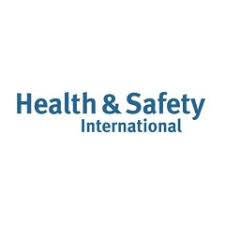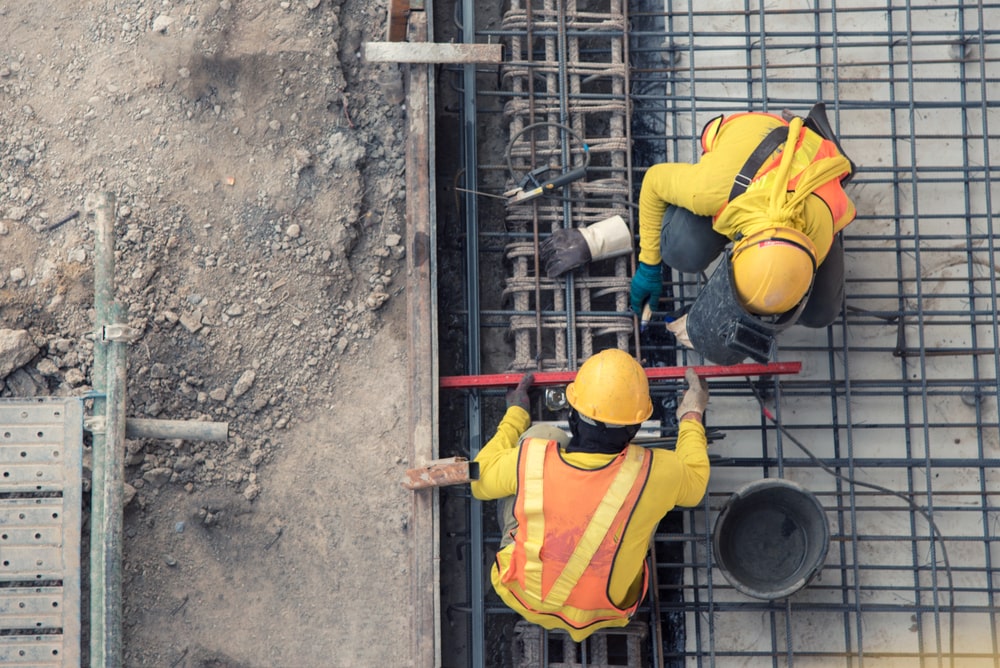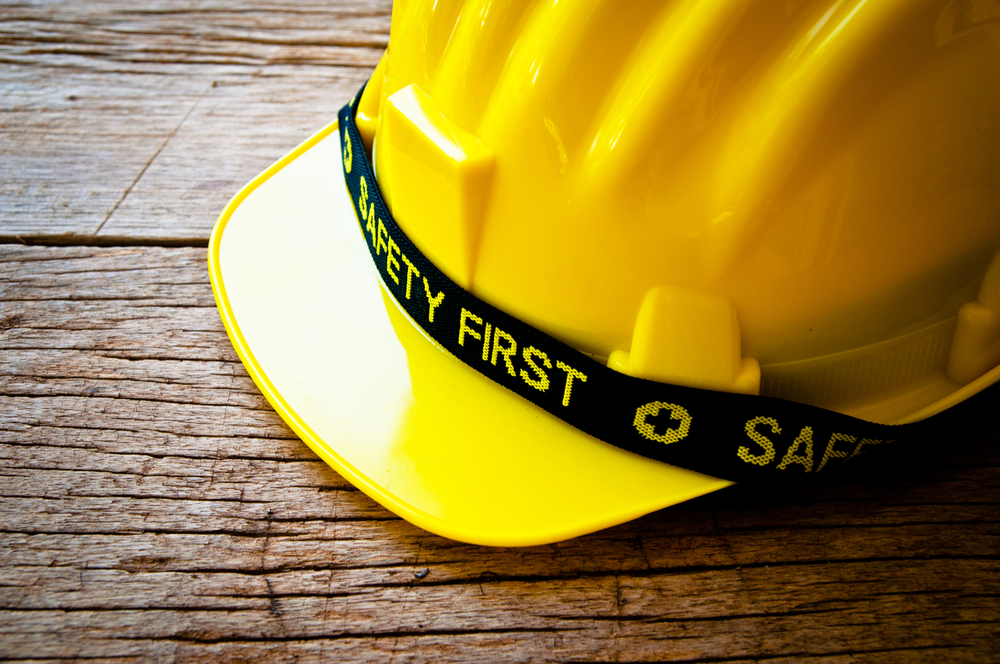News Post
January Newsletter 2015
A food ingredients company has been fined after an employee was scalded by hot cleaning solution whilst working on an industrial cooking vessel. HSE said that the “painful injury could and should have been avoided”.
He was attempting to re-attach an end cap to pipework leading from a cooking vessel, which was being cleaned using a very hot cleaning solution.
The Magistrates’ Court heard that the end cap was likely to have been removed earlier to allow workers access to remove bones and other organic matter from the pipework. Unaware that the employee was closing the pipework, a colleague operated a switch to open the outlet valve, releasing hot cleaning fluid down the pipe and over his arm.
The man was taken to a walk-in centre with a serious scald injury to his right forearm. He was unable to return for two weeks and had temporary limited movement of his arm.
The company was fined £15,000 and ordered to pay £8,950.20 in costs after pleading guilty to breaching section 3(1) of the Management of Health and Safety at Work Regulations 1999 and breaching regulations 8(1) and 19(3) of the Provision and Use of Work Equipment Regulations 1998.
After the case, the HSE inspector said: “The employee’s painful injury could and should have been avoided. The activity that he was involved in was a frequent process and the company should have properly assessed the risks involved in the task and put simple control measures in place to prevent injury. This should have included a procedure to prevent the valve holding the scalding hot cleaning solution from being inadvertently opened whilst people were close by.”
Four in 10 sites fail safety checks
A month-long blitz of repair and refurbishment sites by health and safety inspectors has revealed that 40% are putting workers at unnecessary risk of injury.
The Health & Safety Executive inspectors visited 1,748 repair and refurbishment sites and found unacceptable conditions and dangerous practices at roughly 700 of them.
One in five was so bad that formal enforcement action was required. Many of the issues found could have been easily prevented with simple, straightforward management and planning, the HSE said.
The focus of the spot checks was on health risks and 35% of the notices served related to the management of asbestos, failure to control dusts, noise and vibration, and inadequate welfare facilities.
However safe working at height was once again confirmed as the industry’s most widespread failing. Failure to provide basic safety measures for people working at height accounted for 42% per cent of all enforcement notices served during the campaign.
The HSE chief of construction said: “These results show that whilst the majority of employers in the refurbishment sector are getting it right, a significant part of the industry is seriously failing its workers.
“The inability to properly plan working at height continues to be a major issue, despite well-known safety measures being straightforward to implement. It is just not acceptable that Inspectors had to order work to stop immediately on over 200 occasions because of dangerous practices.
“We also find health is often overlooked as its implications are not immediately visible, however the effects of uncontrolled exposure to deadly dusts such as asbestos and silica can be irreversible. We urge industry to ensure the most basic of measures such as use of protective equipment and dust suppression methods are put in place to help protect the future health of workers.
“We need to continue to educate industry through initiatives like this and encourage a change in behaviour on small projects where over half the industry’s fatal accidents still occur and many workers become seriously ill.”
A construction union t said that the HSE’s findings indicated that mismanagement of sites was a widespread problem. “These findings are simply appalling. Time after time employers are putting workers in danger. The HSE inspections only touch a tiny fraction of construction sites and most construction workers never see an HSE inspector unless a major accident has occurred.
“The HSE are uncovering basic and straightforward safety breaches. It is imperative that far greater emphasis is applied to uncovering dangerous construction practices and prosecuting the guilty. Construction employers will never improve safety unless they fear being caught.”
Firm fined over building collapse scare
A building firm has appeared in court after a botched demolition sent masonry crashing into the kitchen of a neighbouring property, narrowly missing an occupant who had just left the room.
The firm was sentenced for safety failings following the part collapse of a home it was demolishing.
Magistrates were told that debris, including large slabs of brickwork from an end wall, fell on top of the next door property because the firm had failed to properly plan the demolition job to prevent part of the building collapsing in an uncontrolled manner.
An investigation by the Health and Safety Executive (HSE) found the incident could have easily been avoided had the firm used competent people, such as a structural engineer, in the planning process.
The court heard although there had been no injuries, an occupant of the neighbouring house had been in the kitchen only moments before masonry had crashed through a skylight.
The building firm, was fined £8,000 and ordered to pay £1,338 in costs after admitting breaching the Construction (Design and Management) Regulations by failing to plan the demolition in such a way as to avoid danger, or reduce it to as low a level as possible.
After the hearing, the HSE Inspector said: “With this type of demolition, where an excavator eats into the building from one side to the other, there is likely to be a free-standing wall at one end that should be supported, particularly, where this wall is close to a boundary wall.
“The removal by the firm of parts of the building without supporting a remaining wall led to the uncontrolled collapse of that wall. This resulted in immediate danger to both the employees and other people – in this case the residents of the house next door.” “The competence of those assessing the risks of the job was just not good enough. You need someone who understands the integrity of domestic buildings and how they are held together.
“The resulting clear-up operation put further lives at risk as workers went up on to a roof without adequate means to prevent them from falling from that roof.”
Director and safety consultant jailed after labourer’s death
A commercial director and a health and safety advisor have been jailed following the death of a labourer.
The thirty-seven-year-old was crushed to death while working on a basement excavation . The excavations were not properly supported and collapsed, crushing and trapping the man. The emergency services were called but he was pronounced dead at the scene.
It was heard in court how the site manager, was aware of the dangerous state of the excavations, but took no steps to ensure it was safe. It was also heard that, a qualified health and safety advisor contracted out by a Health & Safety Company, was also aware of the risks as he was responsible for drafting the method of work statement.
This document was found to be inadequate and was not followed, despite him having the authority to stop dangerous works, which he failed to do.
Both the director of the company and the health and safety consultant were found guilty of manslaughter. The director was sentenced to three years and three months in jail and the health and safety consultant was jailed for nine months.
10k fine after dangerous roof work is captured on camera
A construction firm has been fined after three workers were photographed on a roof and ladder platform without any safety measures in place. The HSE said that the company “failed to follow basic, and well known, safety precautions”.
The firm, was prosecuted by the HSE following the incident at a two-storey house.
It was heard in Court that the householder, who hired the firm for roofing work, was so concerned by the obvious dangers faced by the workers, he took photos and sent them to the HSE, which investigated.
The photographs showed workers using an unguarded ladder platform that had not been erected properly, and also working on top of the main roof without any means of preventing falls.
HSE told the court that the company had failed to plan the work at height, which is inherently hazardous, leaving their workers without adequate protection against falls of up to six metres.
The firm, was fined a total of £10,000 and ordered to pay £986 in costs after pleading guilty to two breaches of the Work at Height Regulations 2005.
After the hearing, the HSE said: “The Company put the lives of three of their workers at risk by carrying out the roofing job in a totally unsafe manner. Anyone falling from the roof of a two-storey house would likely be killed and that type of disregard for safety is totally unacceptable.
“The firm failed to follow basic, and well-known, safety precautions and heed the guidance available to roofing companies.
“If the work had been planned correctly, more suitable equipment, such as a scaffold, and effective fall protection measures would have been in place. Where practical when working on roofs, there should be fully-guarded platforms or good edge protection in place to stop falls happening.”
Recycling company fined £70,000 after worker fell from conveyor belt
A metal recycling firm has been prosecuted for safety breaches after a worker was left with broken ribs when he fell from a sloping conveyor belt.
The worker, suffered multiple rib fractures following the incident .
It was heard in Crown Court heard on 22 December that the worker was carrying out maintenance on the conveyor belt, leaning over the top end while working on the bearings. When the main power was switched on again, the whole line, including the belt, reactivated.
The man fell from the belt onto a heap of scrap metal below, and then onto the concrete floor, breaking ribs on both sides of his body.
An investigation by HSE found the conveyor belt had not been isolated.
The court was told HSE had taken previous enforcement action against the company. In the summer of 2010 it was found there were no formal procedures for isolating the conveyors during maintenance. An Improvement Notice was issued and complied with.
Further enforcement action was taken in 2010 relating to failing to prevent access to dangerous parts of machinery, and again in 2011.
The company was fined £70,000 and ordered to pay £18,000 in costs for breaching section 2(1) of the Health and Safety at Work etc. Act 1974, and had pleaded guilty at a previous hearing.
After the hearing, the HSE inspector said: “The incident could easily have resulted in a death and only luck saved this worker from more serious injury.
“Had the company put in place the correct, formal procedures for locking off and isolating the conveyor belts, this incident could have been prevented entirely.
“However, it is clear that while the company had complied with previous enforcement action, the firm neglected safety again and again, and disregarded lessons that should have been learned from previous HSE interventions.”
Food company fined after worker is scalded
A food ingredients company has been fined after an employee was scalded by hot cleaning solution whilst working on an industrial cooking vessel. HSE said that the “painful injury could and should have been avoided”.
He was attempting to re-attach an end cap to pipework leading from a cooking vessel, which was being cleaned using a very hot cleaning solution.
The Magistrates’ Court heard that the end cap was likely to have been removed earlier to allow workers access to remove bones and other organic matter from the pipework. Unaware that the employee was closing the pipework, a colleague operated a switch to open the outlet valve, releasing hot cleaning fluid down the pipe and over his arm.
The man was taken to a walk-in centre with a serious scald injury to his right forearm. He was unable to return for two weeks and had temporary limited movement of his arm.
The company was fined £15,000 and ordered to pay £8,950.20 in costs after pleading guilty to breaching section 3(1) of the Management of Health and Safety at Work Regulations 1999 and breaching regulations 8(1) and 19(3) of the Provision and Use of Work Equipment Regulations 1998.
After the case, the HSE inspector said: “The employee’s painful injury could and should have been avoided. The activity that he was involved in was a frequent process and the company should have properly assessed the risks involved in the task and put simple control measures in place to prevent injury. This should have included a procedure to prevent the valve holding the scalding hot cleaning solution from being inadvertently opened whilst people were close by.”
Four in 10 sites fail safety checks
A month-long blitz of repair and refurbishment sites by health and safety inspectors has revealed that 40% are putting workers at unnecessary risk of injury
The Health & Safety Executive inspectors visited 1,748 repair and refurbishment sites and found unacceptable conditions and dangerous practices at roughly 700 of them.
One in five was so bad that formal enforcement action was required. Many of the issues found could have been easily prevented with simple, straightforward management and planning, the HSE said:
The focus of the spot checks was on health risks and 35% of the notices served related to the management of asbestos, failure to control dusts, noise and vibration, and inadequate welfare facilities.
However safe working at height was once again confirmed as the industry’s most widespread failing. Failure to provide basic safety measures for people working at height accounted for 42% per cent of all enforcement notices served during the campaign.
The HSE chief of construction said: “These results show that whilst the majority of employers in the refurbishment sector are getting it right, a significant part of the industry is seriously failing its workers.
“The inability to properly plan working at height continues to be a major issue, despite well-known safety measures being straightforward to implement. It is just not acceptable that Inspectors had to order work to stop immediately on over 200 occasions because of dangerous practices.
“We also find health is often overlooked as its implications are not immediately visible, however the effects of uncontrolled exposure to deadly dusts such as asbestos and silica can be irreversible. We urge industry to ensure the most basic of measures such as use of protective equipment and dust suppression methods are put in place to help protect the future health of workers.
“We need to continue to educate industry through initiatives like this and encourage a change in behaviour on small projects where over half the industry’s fatal accidents still occur and many workers become seriously ill.”
A construction union t said that the HSE’s findings indicated that mismanagement of sites was a widespread problem. “These findings are simply appalling. Time after time employers are putting workers in danger. The HSE inspections only touch a tiny fraction of construction sites and most construction workers never see an HSE inspector unless a major accident has occurred.
“The HSE are uncovering basic and straightforward safety breaches. It is imperative that far greater emphasis is applied to uncovering dangerous construction practices and prosecuting the guilty. Construction employers will never improve safety unless they fear being caught.”
Firm fined over building collapse scare
A building firm has appeared in court after a botched demolition sent masonry crashing into the kitchen of a neighbouring property, narrowly missing an occupant who had just left the room.
The firm was sentenced for safety failings following the part collapse of a home it was demolishing.
Magistrates were told that debris, including large slabs of brickwork from an end wall, fell on top of the next door property because the firm had failed to properly plan the demolition job to prevent part of the building collapsing in an uncontrolled manner.
An investigation by the Health and Safety Executive (HSE) found the incident could have easily been avoided had the firm used competent people, such as a structural engineer, in the planning process.
The court heard although there had been no injuries, an occupant of the neighbouring house had been in the kitchen only moments before masonry had crashed through a skylight.
The building firm, was fined £8,000 and ordered to pay £1,338 in costs after admitting breaching the Construction (Design and Management) Regulations by failing to plan the demolition in such a way as to avoid danger, or reduce it to as low a level as possible.
After the hearing, the HSE Inspector said: “With this type of demolition, where an excavator eats into the building from one side to the other, there is likely to be a free-standing wall at one end that should be supported, particularly, where this wall is close to a boundary wall.”
“The removal by the firm of parts of the building without supporting a remaining wall led to the uncontrolled collapse of that wall. This resulted in immediate danger to both the employees and other people – in this case the residents of the house next door.” “The competence of those assessing the risks of the job was just not good enough. You need someone who understands the integrity of domestic buildings and how they are held together.”
“The resulting clear-up operation put further lives at risk as workers went up on to a roof without adequate means to prevent them from falling from that roof.”
Director and safety consultant jailed after labourer’s death
A commercial director and a health and safety advisor have been jailed following the death of a labourer.
The thirty-seven-year-old was crushed to death while working on a basement excavation . The excavations were not properly supported and collapsed, crushing and trapping the man. The emergency services were called but he was pronounced dead at the scene.
It was heard in court how the site manager, was aware of the dangerous state of the excavations, but took no steps to ensure it was safe. It was also heard that, a qualified health and safety advisor contracted out by a Health & Safety Company, was also aware of the risks as he was responsible for drafting the method of work statement.
This document was found to be inadequate and was not followed, despite him having the authority to stop dangerous works, which he failed to do.
Both the director of the company and the health and safety consultant were found guilty of manslaughter. The director was sentenced to three years and three months in jail and the health and safety consultant was jailed for nine months.
10k fine after dangerous roof work is captured on camera
A construction firm has been fined after three workers were photographed on a roof and ladder platform without any safety measures in place. The HSE said that the company “failed to follow basic, and well known, safety precautions”.
The firm, was prosecuted by the HSE following the incident at a two-storey house.
It was heard in Court that the householder, who hired the firm for roofing work, was so concerned by the obvious dangers faced by the workers, he took photos and sent them to the HSE, which investigated.
The photographs showed workers using an unguarded ladder platform that had not been erected properly, and also working on top of the main roof without any means of preventing falls.
HSE told the court that the company had failed to plan the work at height, which is inherently hazardous, leaving their workers without adequate protection against falls of up to six metres.
The firm, was fined a total of £10,000 and ordered to pay £986 in costs after pleading guilty to two breaches of the Work at Height Regulations 2005.
After the hearing, the HSE said: “The Company put the lives of three of their workers at risk by carrying out the roofing job in a totally unsafe manner. Anyone falling from the roof of a two-storey house would likely be killed and that type of disregard for safety is totally unacceptable.
“The firm failed to follow basic, and well-known, safety precautions and heed the guidance available to roofing companies.
“If the work had been planned correctly, more suitable equipment, such as a scaffold, and effective fall protection measures would have been in place. Where practical when working on roofs, there should be fully-guarded platforms or good edge protection in place to stop falls happening.”
Recycling company fined £70,000 after worker fell from conveyor belt
A metal recycling firm has been prosecuted for safety breaches after a worker was left with broken ribs when he fell from a sloping conveyor belt.
The worker, suffered multiple rib fractures following the incident .
It was heard in Crown Court heard on 22 December that the worker was carrying out maintenance on the conveyor belt, leaning over the top end while working on the bearings. When the main power was switched on again, the whole line, including the belt, reactivated.
The man fell from the belt onto a heap of scrap metal below, and then onto the concrete floor, breaking ribs on both sides of his body.
An investigation by HSE found the conveyor belt had not been isolated.
The court was told HSE had taken previous enforcement action against the company. In the summer of 2010 it was found there were no formal procedures for isolating the conveyors during maintenance. An Improvement Notice was issued and complied with.
Further enforcement action was taken in 2010 relating to failing to prevent access to dangerous parts of machinery, and again in 2011.
The company was fined £70,000 and ordered to pay £18,000 in costs for breaching section 2(1) of the Health and Safety at Work etc. Act 1974, and had pleaded guilty at a previous hearing.
After the hearing, the HSE inspector said: “The incident could easily have resulted in a death and only luck saved this worker from more serious injury.
“Had the company put in place the correct, formal procedures for locking off and isolating the conveyor belts, this incident could have been prevented entirely.
“However, it is clear that while the company had complied with previous enforcement action, the firm neglected safety again and again, and disregarded lessons that should have been learned from previous HSE interventions.”
Demystifying the duty of care in winter months
Health and safety professionals are acutely aware that slips, trips and falls count for over half of workplace injuries and, in the treacherous conditions of a harsh winter, while the temperatures plummet, the risk soars. If a fall on ice or snow occurs, can your organisation rest assured that it has done everything possible to meet its duty of care?
The Health and Safety at Work etc. Act 1974 states that: ‘It shall be the duty of every employer to ensure, so far as is reasonably practicable, the health, safety and welfare at work of all his employees’. Part of that requirement involves providing a healthy and safe working environment but, during winter months when frost, snow and ice appear on and around business premises, sites, and properties, often at very short notice, this presents an added challenge.
But what constitutes a reasonable effort for protecting the health, safety and wellbeing of all employees, visitors, members of the public, and contractors who visit your organisation? Get it wrong, and the results can be disastrous. ‘Getting it right’ can avoid lengthy litigation cases, damage to reputation and huge financial loss.
Creating a completely risk free workplace is almost impossible. We can’t know all the threats and when they’re going to hit, but the essential thing is for businesses to be prepared. A comprehensive winter risk policy, robust management system, and good risk assessment processes are key safety measures.
Some good practice tips for effectively managing winter risk are:
- Incorporate a winter risk policy into the health and safety policy through a recognised health and safety management system such as OHSAS 18001
- Maintain records showing the plan has been delivered and keep them for a minimum of three years
- Document your proactive winter management plan and service activity, fully investigate accidents, and record all details
- Ensure your plan is based on real time accurate weather data and agree action triggers for service
- Carry out detailed bespoke site surveys and specifications with identified hazardous areas and specific gritting instructions
- Ensure you have adequate resources – a dedicated, trained team, sufficient salt supplies, safety checked gritting equipment and vehicles
- Regularly review your policies and plans
- Share winter risk plans with your broker/insurer
Latest News
Health and Safety in Schools Checklist
Health and safety should be a top priority in any workplace, but especially in schools. Not only are you responsible for your staff’s safety, but you need to maintain the welfare of your pupils too. To do so, you must uphold your legal complian..
It can be difficult to decide your future path - a lot can ride on it, after all - but a career in health and safety could be the right choice for you. There are several types of careers in the health and safety industry that might be a good fit..
What is ISO 45001?
If you’re wondering what ISO 45001 is, then this is the guide for you. Replacing the old OHSAS 18001 standard, ISO 45001 is the new international standard for occupational health and safety management. In this guide, we'l..
Who Enforces Health and Safety?
The enforcement of health and safety is crucial to maintain healthy workplaces. The term health and safety itself covers the safety legislation and safety law that comes under the Health and Safety at Work Act 1974. In general, this means t..
Health and safety training is a requirement in the workplace, no matter which sector you work in. Our experts at SMS Europe have been providing an extensive range of specialist health and safety services for almost 20 years. To help make work en..
Health and safety in the workplace is all about controlling risks in a way that protects both your employees and your company. Strong leadership, including your employees, managers, suppliers, contractors, and consumers, is a characteristic of great ..
Health and safety in the workplace is immeasurably important. But, without the Health and Safety at Work Act of 1974, we might have never prized safety so highly. This piece of workplace legislation is highly significant and indeed has transform..
Fire Safety and Fire Risk Assessment at Leased Offices and Buildings Fire safety at leased single and multi- tenanted offices can be approached in a number of ways. Generally speaking, there are three types of premises, (single occupancy lea..
Safety Gloves
Please have a read at SMSE Managing Director Philip Marsden's article on Safety Gloves which is published in the February 2022 edition of Health and Safety International Magazine. https://www.hsimagazine.com/article/fits-like-a-glove/ We wo..
Current Health and Safety Industry Trends
New Guidance Released for Managing Home Workers As an employer, you have the same health and safety responsibilities for those who work from home as you do for all other employees who may work from the workplace. In most cases, the dange..
Who Is Responsible for the Health and Safety on a Building Site? Legally, the responsibility of health and safety within the business lies with the employer. It is up to them to make sure the environment meets the necessary health and safety requi..
No one wants to be injured whilst at work, and no one wants their staff to be injured, especially whilst on the job. That doesn’t mean that accidents don’t happen. In fact, each year an average of 22 manufacturing workers die in workplace..












